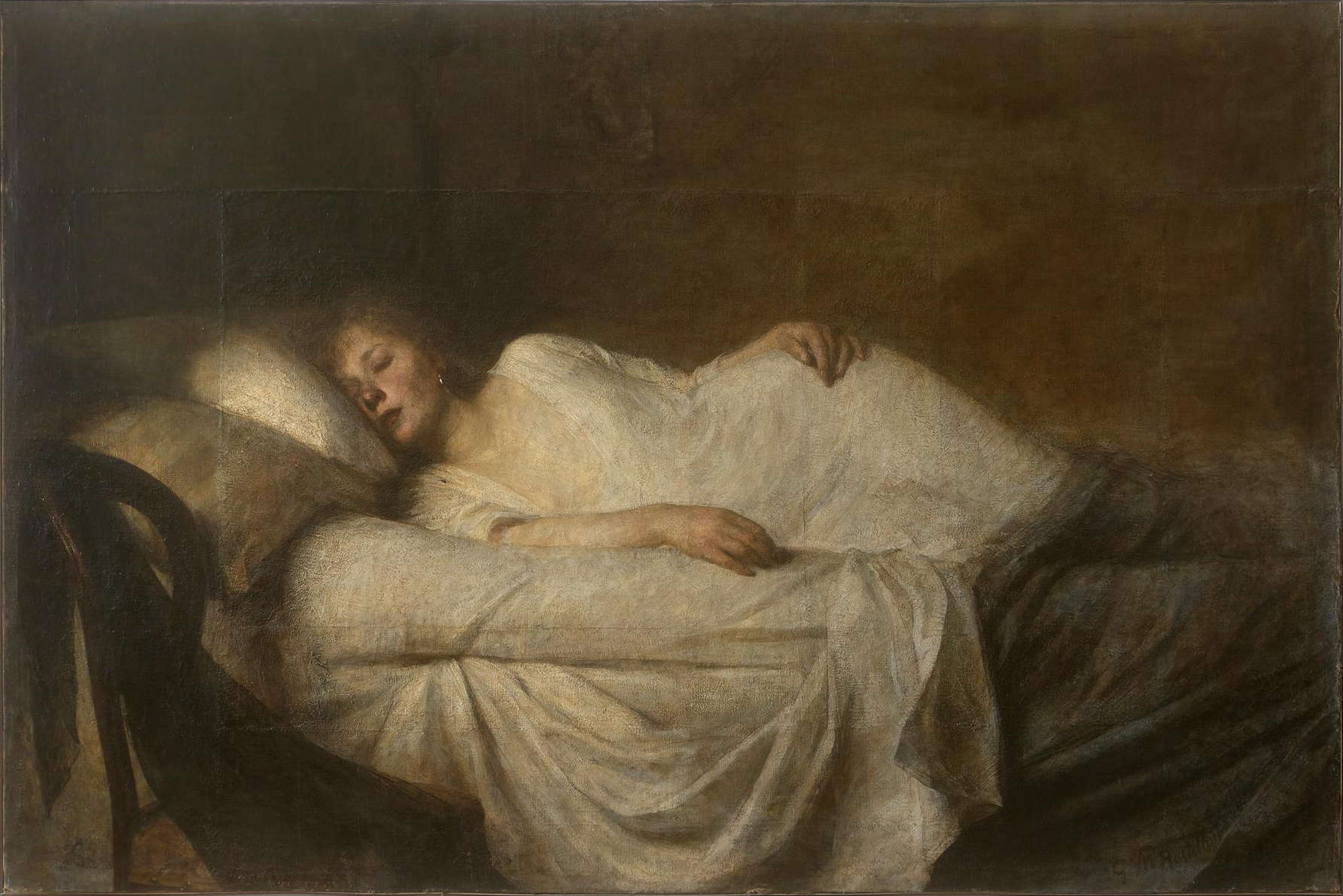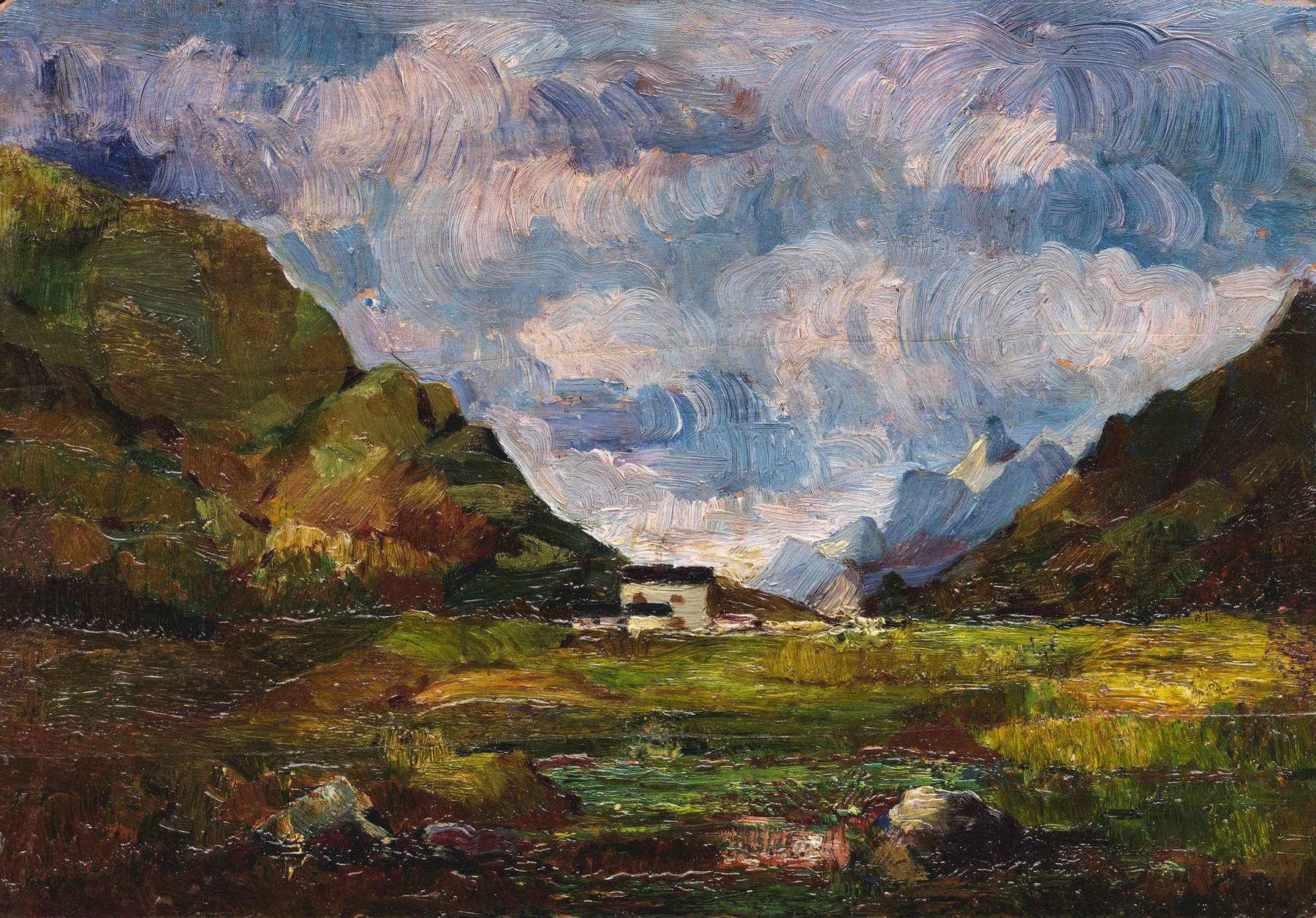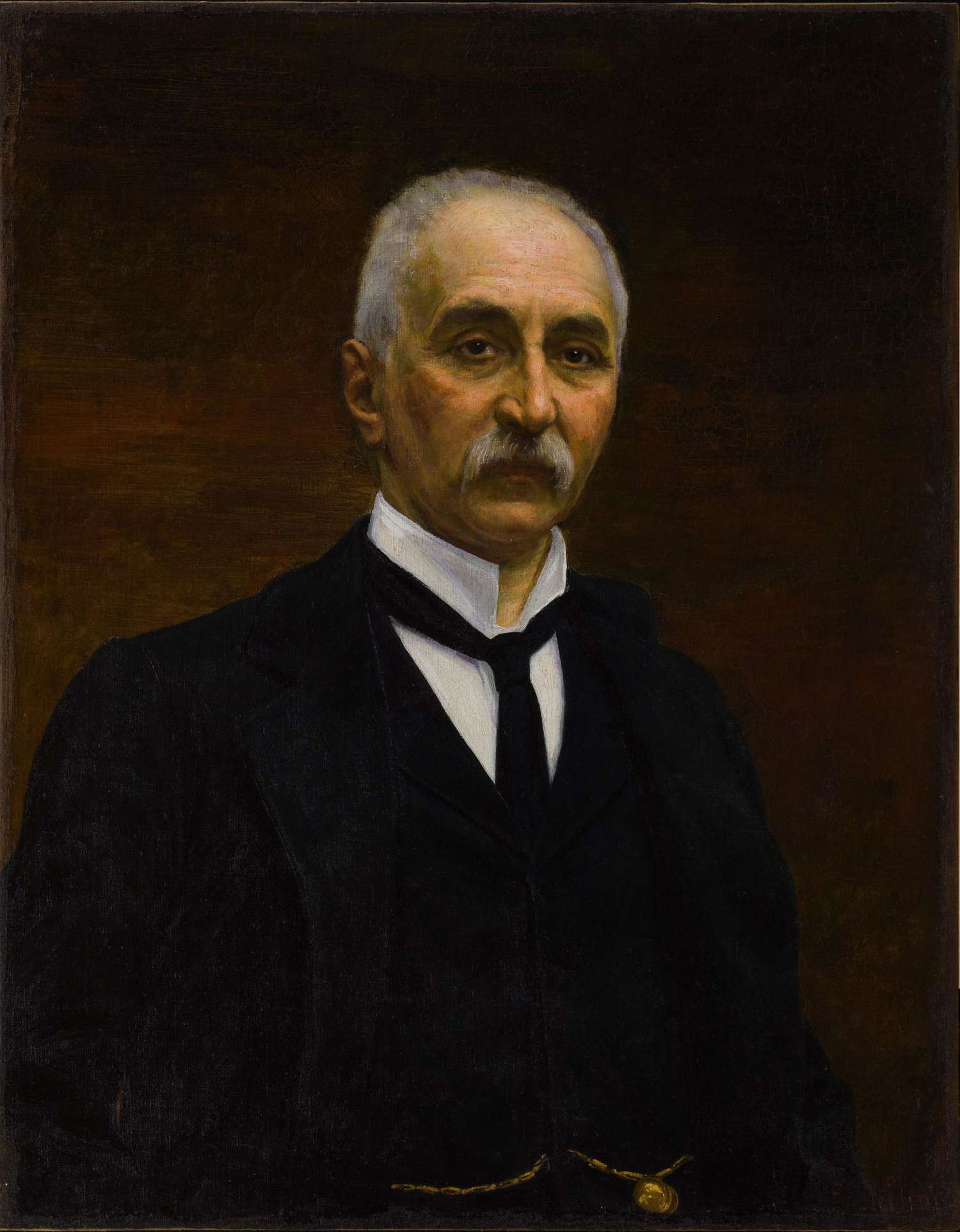The Rossetti Valentini School of Fine Arts in Santa Maria Maggiore (Verbania) is hosting an exhibition dedicated to a little-known but interesting late 19th-early 20th-century artist, Gian Maria Rastellini (Buttogno, 1869 - Milan, 1927). After the success of the anthological exhibition dedicated to Enrico Cavalli, held in the renovated spaces of the Santa Maria Maggiore School of Fine Arts during last summer and fall, the Rossetti Valentini Foundation is therefore presenting a new initiative, with a date from June 30 to November 3, 2024. The exhibition, titled Gian Maria Rastellini in the Milan of Grubicy and Tosi, curated by Lorella Giudici and Elisabetta Staudacher, will trace the training and artistic activity of Gian Maria Rastellini and his brother Gian Battista Rastellini (Buttogno, 1860 - Milan, 1926), both students of Enrico Cavalli.
The exhibition will focus mainly on Gian Maria, who particularly distinguished himself in the artistic scene, while also reserving a space for the works of Gian Battista, who is known mainly as a restorer but the author of numerous still lifes and portraits. The exhibition is divided into five sections. The first is entitled Formation. From Val Vigezzo to Brera. After receiving his first artistic teachings together with his brother Gian Battista from Carlo Giuseppe Cavalli and his son Enrico, Gian Maria perfected his pictorial training at the Academy of Fine Arts in Milan, where he lived and worked until his death. Works from his formative years, part of the collection of the Rossetti Valentini Foundation, will be juxtaposed with those of Carlo Fornara and Giambattista Ciolina, his classmates at the Santa Maria Maggiore school.
The second section, The Dream: Nana, the Beloved Model, illustrates Gian Maria’s bond with his family, particularly his sister, through the painter’s absolute masterpiece, Nana. Exhibited in 1891 at the first Brera Triennale in Milan and in 1913 at the Munich International Exhibition, the painting will win a gold medal. Next to the original painting, from the Poscio Collection, a second version will be exhibited, making the painting visible to the public after more than a century. Caterina, known as Nana, is also portrayed in fragments of everyday life as in the paintings Il nido, presented at the Permanente in 1889, La culla, exhibited at the Famiglia Artistica in Milan in 1893, and Sotto la pergola.



Continuing, the third section, Vigezzo Landscapes between Reality and Memory, explores the places of Rastellini’s youth and the strong connection he maintained with them. His love for his native home in Buttogno, the places of his childhood and the nature of his valley deeply influenced his work. On display are portraits of people from the valley, impressions of landscapes and scenes of everyday life, such as Humble Life from the Museum of Landscape in Verbania. Rastellini maintained a constant relationship with his childhood friends, particularly Carlo Fornara and Giambattista Ciolina, with whom he exchanged long letters full of technical advice on painting and comments on Milan’s lively artistic climate.
The fourth section, entitled The Milan of Grubicy and Tosi, offers a glimpse into the Milanese life of Gian Maria Rastellini and his brother Gian Battista, who shared a house and studio on Via Monforte. Here, Gian Maria established himself as a portraitist of the Lombard bourgeoisie, following the teachings of master Enrico Cavalli. In Milan, he frequented Arturo Tosi and formed relationships with Vittore Grubicy, Eugenio Gignous and Leonardo Bazzaro. On display are Grubicy’s painting Il carretto of 1887, with the author’s dedication to Gian Maria, and portraits of figures from Lombardy’s upper middle class and nobility, such as Bice Borghi Amman and Marchesa Teresa Visconti.
Finally, the fifth section, The Ligurian Seas, recounts the influence of Liguria in the artist’s life. Gian Maria, fascinated by the sea since the early years of his career, portrayed not only the mountains but also the Ligurian sea. His bond with his daughter Maddalena, nicknamed Nene, led him during World War I to seek accommodation around Genoa. Sturla, Nervi and Quarto became places of observation for Rastellini, immersing himself in observing the sea and its colors that Enrico Cavalli so admired.
The exhibition is enhanced by documents, letters, postcards, personal items and two photo albums by Emilio Sommariva, the Milanese photographer. The Rastellini family commissioned Sommariva to take several photographic campaigns of the works of Gian Maria, Gian Battista and Adolphe Monticelli. Documentation tracked down in the family archives and in other archives, such as those of the Mart in Rovereto, the Accademia di Brera and the Società per le Belle Arti ed Esposizione Permanente, has made it possible to reconstruct a detailed chronology of Gian Maria and the Rastellini family, which will be published in a catalog published by Belle Arti Vigezzo.
The event, organized by the Rossetti Valentini Foundation in collaboration with the Municipality of Santa Maria Maggiore, Compagnia di San Paolo Foundation, VCO Community Foundation, Museum of Vigezzo Emigration in the World, Tourism District of the Lakes, Mountains and Valleys of Ossola and SSIF Società Subalpina di Imprese Ferroviarie, celebrates the artist’s centenary. The exhibition is sponsored by AICA Italy (International Association of Art Critics), Society for Fine Arts and Permanent Exhibition of Milan, Ciolina Foundation, Poscio Collection and Asilo Bianco, with support from Archivio Rastellini, Big Ciaccio Arte and Gruppo Folkloristico Valle Vigezzo. Open daily except Monday (closing day) from 10 a.m. to 12:30 p.m. and 4 p.m. to 6 p.m. From Sept. 14 to Nov. 3, open only Saturdays and Sundays. Responsible contribution admission.
 |
| An exhibition in the Vigezzo Valley rediscovers the art of Gian Maria Rastellini |
Warning: the translation into English of the original Italian article was created using automatic tools. We undertake to review all articles, but we do not guarantee the total absence of inaccuracies in the translation due to the program. You can find the original by clicking on the ITA button. If you find any mistake,please contact us.